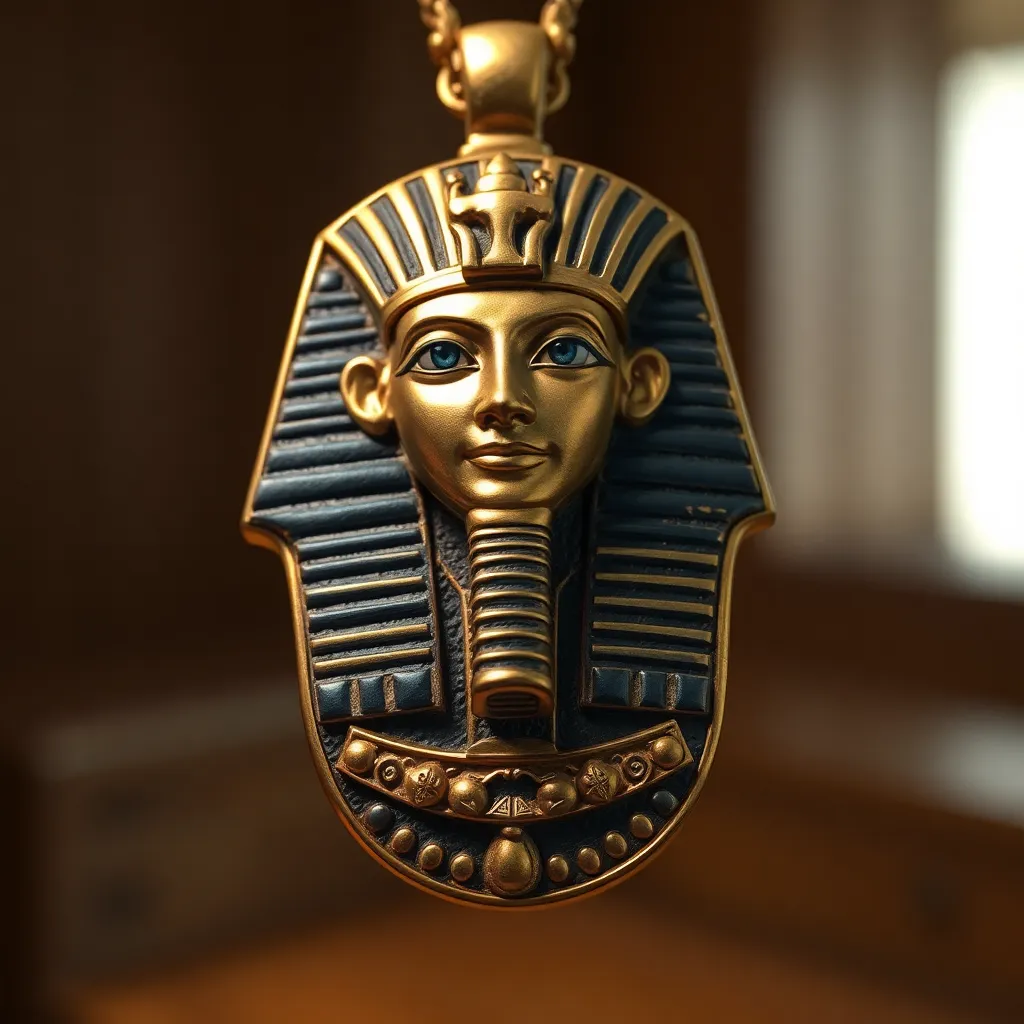The Amulet of Ptah: Creator God and Artisan’s Protector
I. Introduction
The Amulet of Ptah holds a vital place in ancient Egyptian culture, representing not only the creator god but also serving as a protective charm for artisans and craftsmen. This unique amulet symbolizes the rich tapestry of mythology and spirituality that characterized ancient Egypt. In this article, we will explore the historical context of Ptah, the symbolism of the amulet, the connection between artisans and Ptah, its protective qualities, archaeological findings, and its modern relevance.
II. Historical Context of Ptah
Ptah is one of the most significant deities in ancient Egyptian mythology, revered as the god of creation, craftsmanship, and architecture. His origins can be traced back to the early dynastic period of Egypt, and he was primarily worshipped in Memphis, where he was considered the city’s patron god.
- Origins of Ptah in Egyptian mythology: Ptah is often depicted as a mummified man, symbolizing death and rebirth, and associated with the primordial waters of chaos from which creation emerged.
- Role of Ptah in the creation myth: According to Egyptian creation myths, Ptah spoke the world into existence through the power of his heart and tongue, emphasizing the importance of thought and speech in the act of creation.
- Worship and reverence for Ptah among artisans: As the patron deity of craftsmen, Ptah was highly revered by artisans who sought his blessings for skill and success in their trades.
III. Symbolism of the Amulet
The Amulet of Ptah serves as a physical representation of the god’s attributes and powers. It was crafted in various materials and designs, each holding its own significance.
- Representations of Ptah in art and artifacts: Ptah is often depicted holding a scepter and wearing a skullcap, symbolizing his authority and creativity.
- Common materials and designs used for the amulet: The amulet was frequently made from materials such as faience, gold, and stone, showcasing intricate designs that reflected the artistry of the period.
- Symbolic meanings associated with the amulet: The amulet symbolizes protection, creativity, and the power of speech, embodying the essence of Ptah as a creator and protector.
IV. The Artisan’s Connection to Ptah
Ptah is recognized as the patron deity of craftsmen, highlighting the importance of artisanship in ancient Egyptian society.
- Ptah as the patron deity of craftsmen: Artisans invoked Ptah’s name in their work, believing that his guidance would enhance their skills and the quality of their creations.
- The significance of craftsmanship in ancient Egypt: Craftsmanship was highly valued, and skilled artisans were essential for creating the monumental architecture and art that characterized ancient Egyptian civilization.
- Rituals and practices involving the amulet among artisans: Craftsmen often wore Ptah amulets and performed rituals to seek his favor, ensuring their work was blessed and successful.
V. The Amulet’s Protective Qualities
Beyond its role as a symbol of creation, the Amulet of Ptah was believed to possess protective qualities that were essential in daily life.
- Beliefs surrounding the protective power of the amulet: It was believed that wearing the amulet would shield the wearer from harm, misfortune, and negative energies.
- How the amulet was used in daily life and rituals: Artisans would wear the amulet during their work and special ceremonies, ensuring they remained under Ptah’s protection.
- Examples of protective spells or inscriptions associated with the amulet: Many amulets featured inscriptions or spells invoking Ptah’s protection, further enhancing their spiritual significance.
VI. Archaeological Discoveries and Interpretations
The discovery of Ptah amulets in various archaeological sites has provided significant insights into the beliefs and practices of ancient Egyptians.
- Notable findings of Ptah amulets in archaeological sites: Amulets dedicated to Ptah have been found in tombs, temples, and workshops, indicating their widespread use and importance.
- Insights gained from these discoveries: These artifacts have helped researchers understand the role of Ptah in society and the significance of craftsmanship in ancient Egyptian culture.
- The amulet’s impact on our understanding of ancient Egyptian society: The continued reverence for Ptah and the widespread use of his amulet demonstrate the interconnectedness of religion, art, and daily life in ancient Egypt.
VII. Modern Relevance and Cultural Legacy
The legacy of the Amulet of Ptah continues to resonate in contemporary culture, influencing art, jewelry, and spiritual practices.
- The amulet’s influence on contemporary art and jewelry: Modern artisans often draw inspiration from ancient Egyptian motifs, including the Ptah amulet, incorporating them into jewelry and artistic designs.
- Adaptations of Ptah’s symbolism in modern spirituality: In contemporary spiritual practices, Ptah is sometimes invoked as a symbol of creativity and protection, reflecting the ancient beliefs that still hold relevance today.
- The ongoing fascination with ancient Egyptian mythology: The allure of ancient Egypt continues to captivate people worldwide, with the Amulet of Ptah serving as a key symbol of this fascination.
VIII. Conclusion
In summary, the Amulet of Ptah represents a rich intersection of creativity, protection, and craftsmanship in ancient Egyptian culture. As both a creator god and a protector of artisans, Ptah’s legacy is deeply embedded in the beliefs and practices of ancient Egyptians. The amulet not only served as a charm for protection but also as a symbol of the profound respect for craftsmanship and artistry. As we explore ancient Egyptian artifacts and beliefs, we gain a greater appreciation for the complexity and depth of their mythology and cultural heritage.




